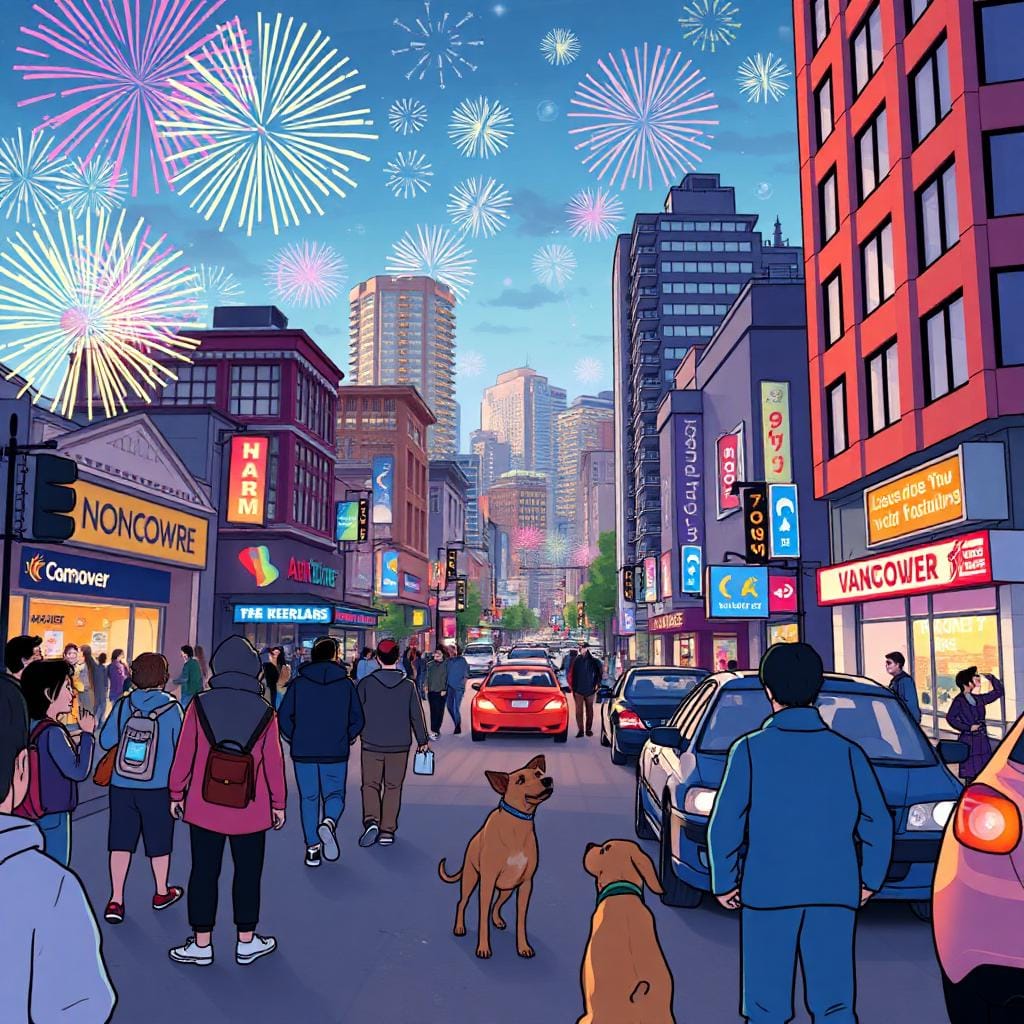
Vancouver, BC - April 1, 2025 - In March 1996, the Vancouver City Council convened the Urban Noise Task Force, comprised of citizens concerned about urban noise pollution. Following 13 meetings and substantial public engagement, including a telephone survey of 1,000 citizens and feedback from over 250 individuals and organizations, the Task Force produced an Interim Report by the end of July. This report was shaped by community input, public meetings, and insights from invited experts. An additional five meetings led to the Final Report released in late 1996, aimed at establishing a strategic approach to urban noise in the 21st century.
The report identifies 46 categories of noise and provides 165 recommendations to enhance Vancouver's soundscape. Among the primary concerns is traffic noise, which the Task Force identifies as a significant issue. It calls for the City to enact abatement procedures and collaborate with government agencies to improve noise standards. Aircraft noise, particularly from Vancouver International Airport and Coal Harbour, is also addressed with proposed remedial actions.
Traffic Noise Example
Jane, a Downtown Vancouver resident in the mid-2000s, lived in a high-rise near Georgia Street, a major artery identified as a traffic noise hot-spot in the 1996 report. She recalled waking up at 3 a.m. to the roar of a modified motorcycle tearing through the street, its exhaust unmuffled and piercing the night. This wasn’t a one-off—delivery trucks, car alarms, and “boom box” vehicles were daily nuisances, reflecting the Task Force’s finding that traffic noise was a top complaint, cited by over 51% of survey respondents in 1996. Jane reached her breaking point one weekend when a group of street racers sped by repeatedly, prompting her to call the VPD.
The police arrived within 20 minutes, catching one of the racers in the act. The officer explained that they could ticket vehicles exceeding 91 dB under provincial law, a measure the Task Force had supported by recommending collaboration with higher government levels to enforce stricter noise standards. Jane watched as the racer received a $109 fine and three penalty points, a small victory that quieted her street for a few nights. However, she noted that without consistent patrols—another Task Force suggestion—the problem soon crept back, underscoring the report’s call for sustained enforcement over sporadic responses.
The report emphasizes public education as a critical action item, advocating for improved communication about soundscape issues across all community levels. It discusses disruptive sounds from vehicles, recreation, and entertainment, recommending initiatives and enhancements to existing city regulations concerning these disturbances.
Neighborhood noise issues, such as barking dogs and disruptive parties, are also covered, with suggestions for a systematic approach to complaints and stricter controls on "party houses." Additionally, the report tackles residential equipment noise, advocating for regulations governing the use of gasoline-powered tools.
Party House Crackdown
In the late 1990s, a resident of Vancouver’s Kitsilano neighborhood, let’s call her Sarah, shared a story about a notorious “party house” on her street. Night after night, loud music, shouting, and the revving of car engines disrupted the otherwise quiet residential area. Sarah, a single mother with a young child, found it impossible to sleep or maintain a peaceful home. She recalled how the noise would start around 10 p.m. and often continue past 2 a.m., with bass-heavy music vibrating through her walls. After weeks of frustration and unsuccessful attempts to reason with the tenants, she called the Vancouver Police Department (VPD).
Initially, the police response was limited—officers would arrive, issue a warning, and leave, only for the noise to resume an hour later. This aligns with the 1996 Task Force’s findings that noise complaints, like those from disruptive parties, often lacked consistent enforcement. However, after multiple calls from Sarah and her neighbors, the VPD stepped up their efforts. One night, officers arrived with a noise meter, documented the excessive decibel levels (well above the city’s bylaw limit of 55 dB at night), and issued a substantial fine to the tenants. The threat of escalating penalties—echoing the Task Force’s recommendation for “progressive fines for repeat violations”—finally quieted the house. Sarah noted that it wasn’t just the fine but the sustained pressure from the community and police that made the difference, a strategy the Task Force had pushed for to tackle chronic neighborhood noise.
Fireworks Disruption
Vancouver’s annual Celebration of Light, a massive fireworks festival held each summer, has long been a double-edged sword for residents. In July 2005, a West End resident named Michael shared his experience of the event’s impact. Living near English Bay, he described the fireworks as “a beautiful spectacle turned auditory assault.” The explosions began around 10 p.m., rattling windows and setting off car alarms for blocks. His dog, a rescue with anxiety issues, spent the night trembling under the bed, while Michael’s attempts to sleep were thwarted by the relentless booms and the crowds shouting below.
The noise didn’t end with the fireworks—revellers lingered into the early hours, honking horns and blasting music from portable speakers. Michael called 311 to complain, only to be told that the event had a noise exemption permit, a practice the Task Force had flagged as poorly regulated in its 1996 report under “Recreation and Entertainment Noise.” While no police intervention occurred that night, the disruption echoed the Task Force’s concerns about large-scale events overwhelming residential areas. Michael later learned from a neighbour that in previous years, police had been called to manage post-fireworks traffic chaos and noise from intoxicated partiers, sometimes dispersing crowds with megaphones and patrols—a reactive measure rather than the proactive planning the Task Force had urged.
The growth of noise in Vancouver has followed the trend seen in most major cities, with an approximate doubling of the intensity every six years. The largest increase is due to the growth of automobile, bus, truck and motorcycle traffic. With the growth in population and the increase in hospitality and entertainment industries in the Downtown core, other sources have also become more intrusive. Examples are construction machinery noise, air conditioning equipment, buskers, entertainment centres and night clubs. Of growing concern is the unrestrained use and intrusive sound characteristics of leaf blowers and the increasing frequency of aircraft movements at the waterfront and over the city, as well as that latest threat, the jet ski.
Finally, the Task Force recommends that the City lead by example, favouring quieter machinery in procurement, thus promoting innovation and sustainability. The problems are compounded by the limited jurisdiction of the City with, for example, the noise of vehicles, a responsibility of the province, or with regard to airplanes and boats, usually responsibilities of the federal government. The findings of the Vancouver Noise Report highlight a community-focused strategy designed to improve the urban auditory environment for all residents. Despite these challenges, the report’s legacy continues to inspire hope—small victories, like quieter parks thanks to electric leaf blowers and growing community awareness, signal a brighter, more peaceful future for Vancouver’s soundscape.
#Vancouver Noise Report, #Urban Soundscape, #Noise Pollution, #Sound Awareness, #Community Engagement, #Sustainable Cities #WBN News Vancouver #Downtown Vancouver #Elke Porter
Connect with Elke at Westcoast German Media or on LinkedIn: Elke Porter or contact her on WhatsApp: +1 604 828 8788

